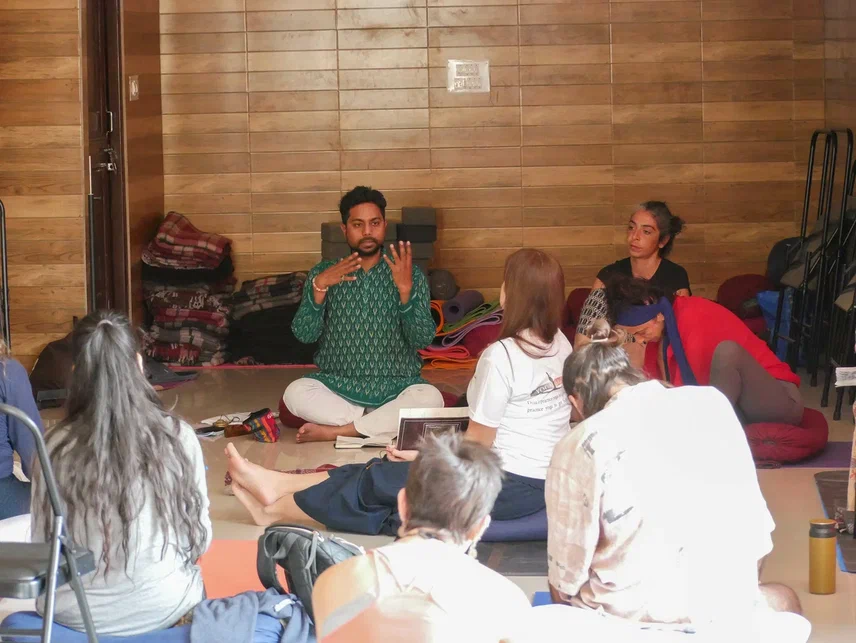Namaste, dear readers. Today, we want to share with you the transformative power of kundalini yoga chakras. Also, exactly how they can help you in finding tranquility amid emotional chaos. Life’s journey is filled with ups and downs, and often, our feelings can get the best of us. But fear not, for the ancient knowledge of the kundalini yoga chakras uses a course to balance.
Comprehending Emotional Inequality
Emotions are an essential part of being human. They color our experiences, influence our choices, and also define the means we connect with the world. Nonetheless, there are times when our emotions become overwhelming, leaving us feeling unbalanced, nervous, or even dispirited. It’s crucial to recognize that emotional chaos is a natural part of life, but it’s similarly crucial to seek equilibrium.
The Power of Kundalini Yoga Chakras
Kundalini Yoga, usually referred to as the “yoga of awareness,” is an extensive method. This incorporates physical positions, breathwork, reflection, and the awakening of Kundalini power.
At the heart of Kundalini Yoga are the seven chakras, which are power facilities located along the back. These yoga chakras play an essential function in regulating our psychological, psychological, and physical well-being.
7 Kundalini Yoga Chakras that can help you locate peace among emotional imbalance:
1. Muladhara (Root Chakra)
The first chakra, Muladhara, is located at the base of the back and is connected with feelings of security and security. When this chakra is well balanced, it helps you really feel based and risk-free, minimizing anxiety and worry.
Kundalini yoga chakra practice for Muladhara: Try the “Root Lock” (Mula Bandha) technique throughout your yoga technique to trigger and balance this chakra.
2. Svadhisthana (Sacral Chakra)
Svadhisthana, the sacral chakra, is located in the lower abdomen and is linked to emotions, sensuality, and creativity. Stabilizing this chakra can assist you in getting in touch with your emotions and discovering happiness and enthusiasm in life.
Kundalini method for Svadhisthana: Exercise the “Frog Pose” (Mandukasana) to stimulate and stabilize this chakra.
3. Manipura (Solar Plexus Chakra)
The solar plexus chakra, Manipura, is located in the top abdominal area and regulates your sense of self-regard, self-confidence, and individual power. A well-balanced Manipura can help you reclaim control over your feelings and also improve self-confidence.
Kundalini yoga chakra practice for Manipura: Integrate the “Breath of Fire” (Agni Pran) into your routine to ignite the fire of this chakra.
4. Anahata (Heart Chakra)
The heart chakra, Anahata, is at the center of the chakra system and is everything about love, compassion, and forgiveness. Balancing this kundalini yoga chakra can help you heal psychological wounds and foster loving connections with others and on your own.
Kundalini method for Anahata: Exercise the “Heart Opening Reflection” to trigger and also balance this chakra’s power.
5. Vishuddha (Throat Chakra)
Vishuddha, the throat chakra, is located at the throat and is linked to interaction and self-expression. A well-balanced Vishuddha chakra can help you share your feelings and thoughts extra easily and authentically.
Kundalini yoga chakra practice for Vishuddha: Try the “Lion’s Breath” (Simha Pranayama) to clear and balance this chakra.
6. Ajna (Third-Eye Chakra)
The third-eye chakra, Ajna, is positioned in the center of the temple and is related to intuition and understanding. A balanced Ajna chakra can help you acquire clearness and make wise choices during emotionally challenging times.
Kundalini yoga chakra technique for Ajna: Practice the “Third Eye Reflection” to awaken and balance this chakra.
7. Sahasrara (Crown Chakra)
The crown chakra, Sahasrara, goes to the top of the head and also represents our link to the divine and universal consciousness. Stabilizing this chakra can bring profound internal peace and a sense of oneness with the universe.
Kundalini method for Sahasrara: Explore the “Crown Chakra Meditation” to open and stabilize this chakra.
The Journey to Equilibrium.
Stabilizing the kundalini yoga chakras is not a quick fix; it’s a trip that requires perseverance, commitment, and self-reflection. With regular technique, you can progressively release emotional clogs and also restore harmony within yourself.
Remember that emotional imbalance belongs to life, and it’s all right to seek support from a Kundalini Yoga trainer if needed. They can give support and personalized techniques tailored to your distinct psychological obstacles.
Conclusion
In the pressure of modern life, discovering inner tranquility can be a challenging undertaking. Nonetheless, the knowledge of Kundalini Yoga and the power of the seven chakras use a transformative course to psychological balance and serenity. By nurturing and stabilizing these power centers, you can navigate the ups and downs of life with grace and peacefulness.
So, if you find yourself struggling with emotional imbalance, consider embracing the profound training of Kundalini Yoga Chakras. Explore the power of your chakras, and start a journey of self-discovery and internal peace. Via this old technique, you may just discover the tranquility you’ve been seeking the whole time, deep within yourself.
May your path to emotional balance be loaded with love, light, and extensive improvement. Namaste.
Read more – Savasana (Corpse Pose): Benefits and Precautions


